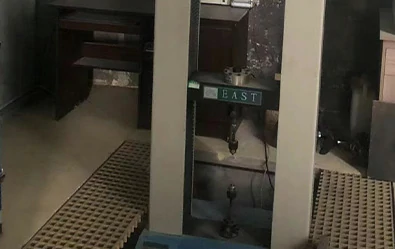loading...
- No. 9, Xingyuan South Street, Dongwaihuan Road, Zaoqiang County, Hengshui, Hebei, China
- admin@zjcomposites.com
- +86 15097380338
- Welcome to visit our website!
Understanding the Benefits of Floor Grating in Modern Construction and Design
The Importance of Floor Grating in Modern Architecture and Design
In contemporary architecture and design, floor grating plays a significant role both functionally and aesthetically. From industrial settings to commercial spaces and even residential areas, floor grating serves several vital purposes, including safety, ventilation, and drainage.
What is Floor Grating?
Floor grating is a type of flooring system composed of a framework of bars or strips that create an open grid. Typically made from materials such as steel, aluminum, or fiberglass, grating allows for water, light, and air to pass through while providing a stable surface for walking and working. This unique design makes it particularly useful in a variety of applications, ranging from industrial facilities to decorative landscaping.
Safety and Performance
One of the primary reasons floor grating is widely utilized is for safety. In environments where spills, moisture, or heavy machinery are present, traditional flooring may become hazardous. Grating offers superior slip resistance due to its open design, which allows for better drainage and minimizes the accumulation of water or other substances that could lead to slips and falls. This feature is essential in factories, kitchens, and outdoor areas where safety is a top concern.
Moreover, floor grating can also accommodate heavy loads. Industrial settings often require flooring that can support the weight of heavy equipment or foot traffic, and grating can be engineered to handle these demands efficiently. The load-bearing capacity of grating makes it a popular choice in warehouses, manufacturing plants, and commercial spaces.
Ventilation and Cleanliness
Another critical function of floor grating is its ability to promote air circulation and facilitate drainage. In places like pools, restaurants, and food processing facilities, proper ventilation and the efficient removal of liquids are necessary to maintain cleanliness and prevent the growth of harmful bacteria.
floor grating

The open structure of grating allows air to flow freely, reducing humidity and promoting a healthier environment. Additionally, since grating can be installed with the right slope towards drainage points, it effectively channels water away from surfaces, further enhancing hygiene and safety standards.
Aesthetic Appeal
While function is paramount, the aesthetic appeal of floor grating should not be underestimated. Various designs, colors, and finishes are available, allowing architects and designers to incorporate grating into their overall design vision. Whether used in sidewalks, outdoor patios, or modern staircases, grating can add a contemporary touch while ensuring safety and functionality.
In landscaping, decorative floor grating can create stunning visual effects, particularly when combined with lighting installations. Grating can be used strategically to enhance outdoor spaces, providing a beautiful contrast between natural surroundings and man-made elements.
Versatility and Customization
One of the most compelling aspects of floor grating is its versatility. It can be customized to fit the specific needs of any project. Various types of grating are available, including heavy-duty grating for industrial use, lightweight options for residential installations, and decorative designs for public spaces. Customization options extend from size and load-bearing capacity to surface finishes, allowing for tailored solutions that meet distinct requirements.
Conclusion
In conclusion, floor grating is an essential component in modern architecture and design. Its contributions to safety, performance, ventilation, cleanliness, and aesthetics make it an invaluable asset in various applications. As designers and architects continue to innovate and explore new materials and design philosophies, floor grating will undoubtedly remain a prominent feature, blending functionality with style to enhance our built environments. Whether in a bustling factory, a sleek office, or a serene outdoor space, floor grating provides the foundation for safety and design.
-
The Rise of FRP Profiles: Strong, Lightweight, and Built to LastNewsJul.14,2025
-
SMC Panel Tanks: A Modern Water Storage Solution for All EnvironmentsNewsJul.14,2025
-
GRP Grating: A Modern Solution for Safe and Durable Access SystemsNewsJul.14,2025
-
Galvanized Steel Water Tanks: Durable, Reliable, and Ready for UseNewsJul.14,2025
-
FRP Mini Mesh Grating: The Safer, Smarter Flooring SolutionNewsJul.14,2025
-
Exploring FRP Vessels: Durable Solutions for Modern Fluid HandlingNewsJul.14,2025
-
GRP Structures: The Future of Lightweight, High-Performance EngineeringNewsJun.20,2025
